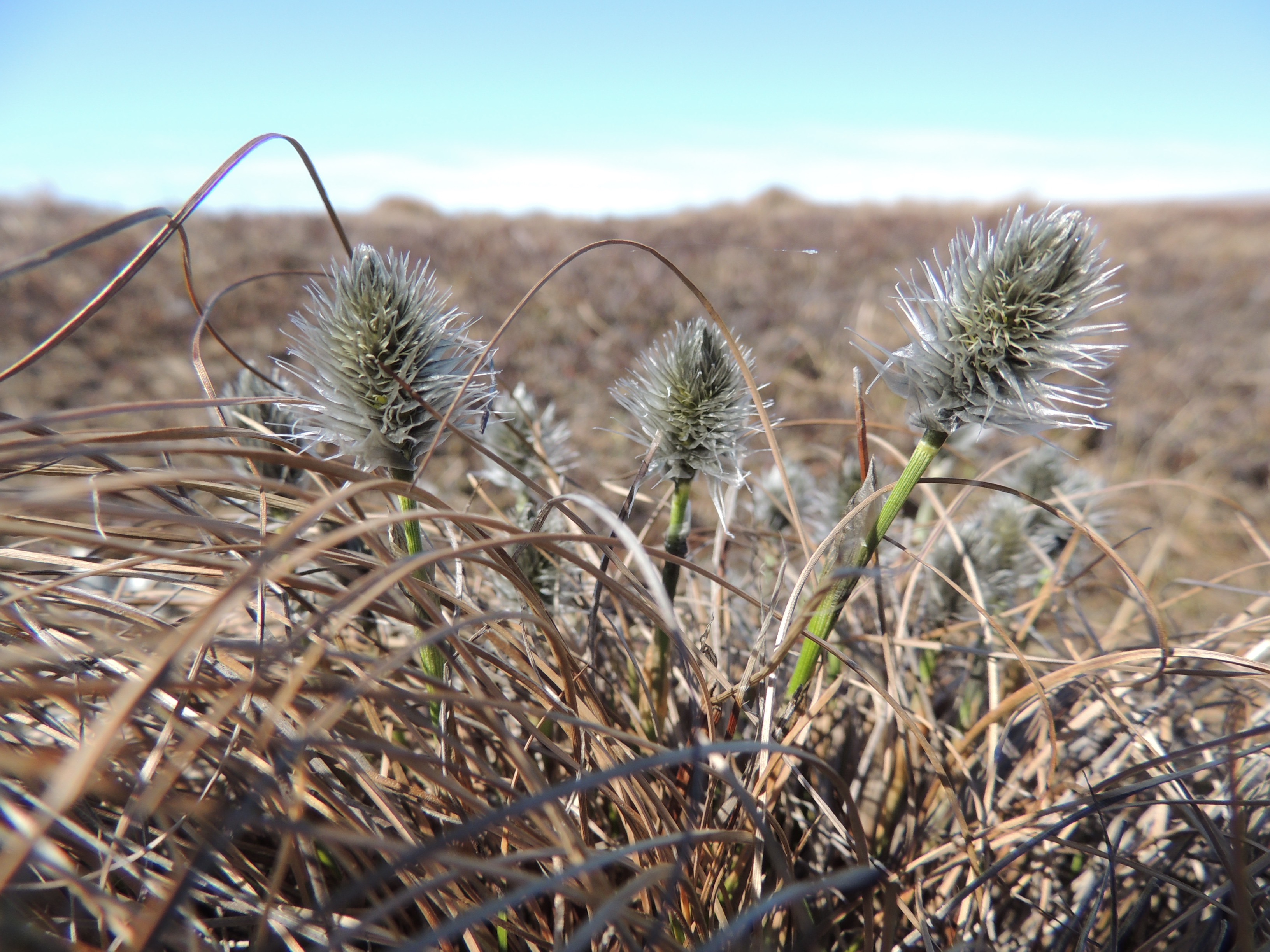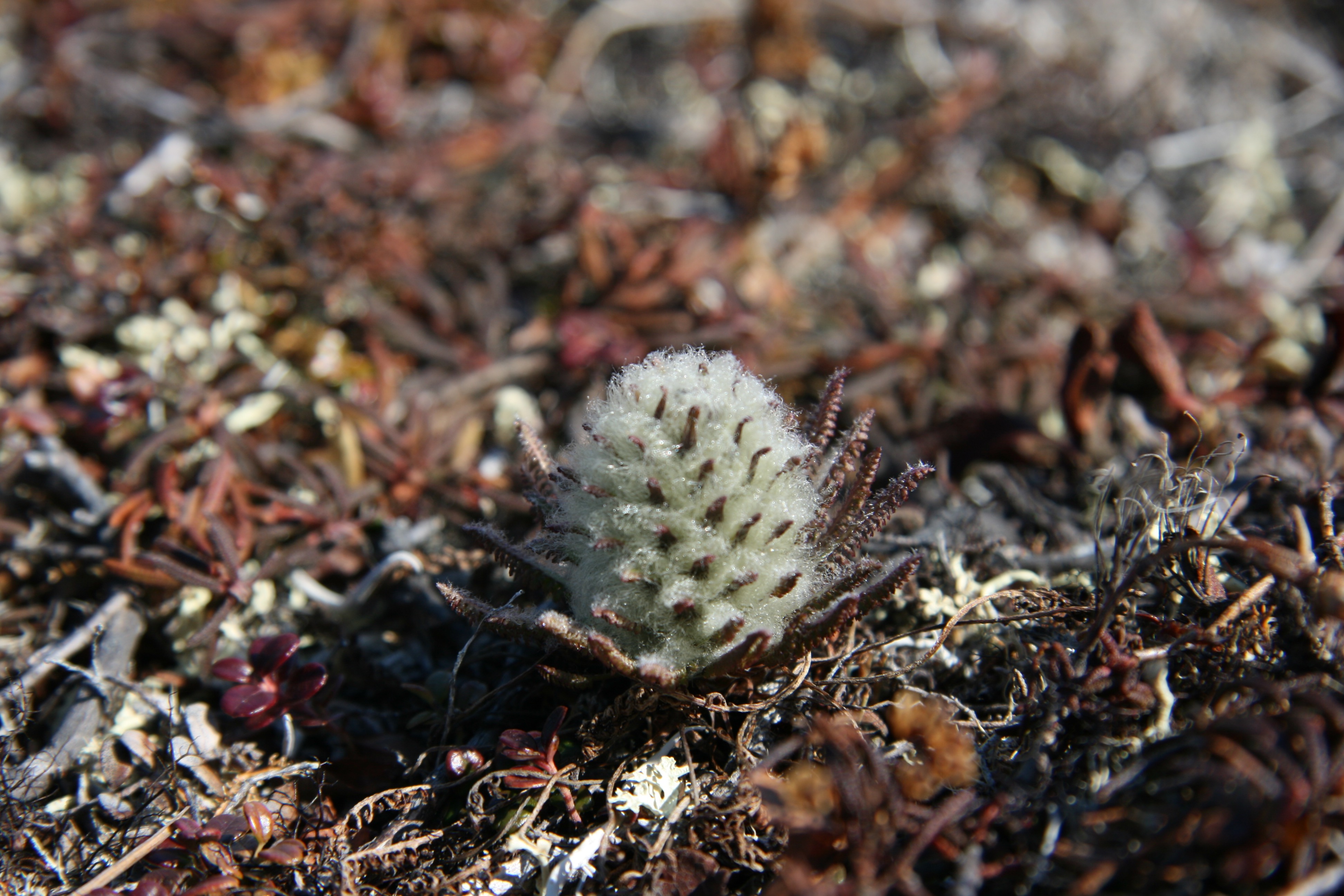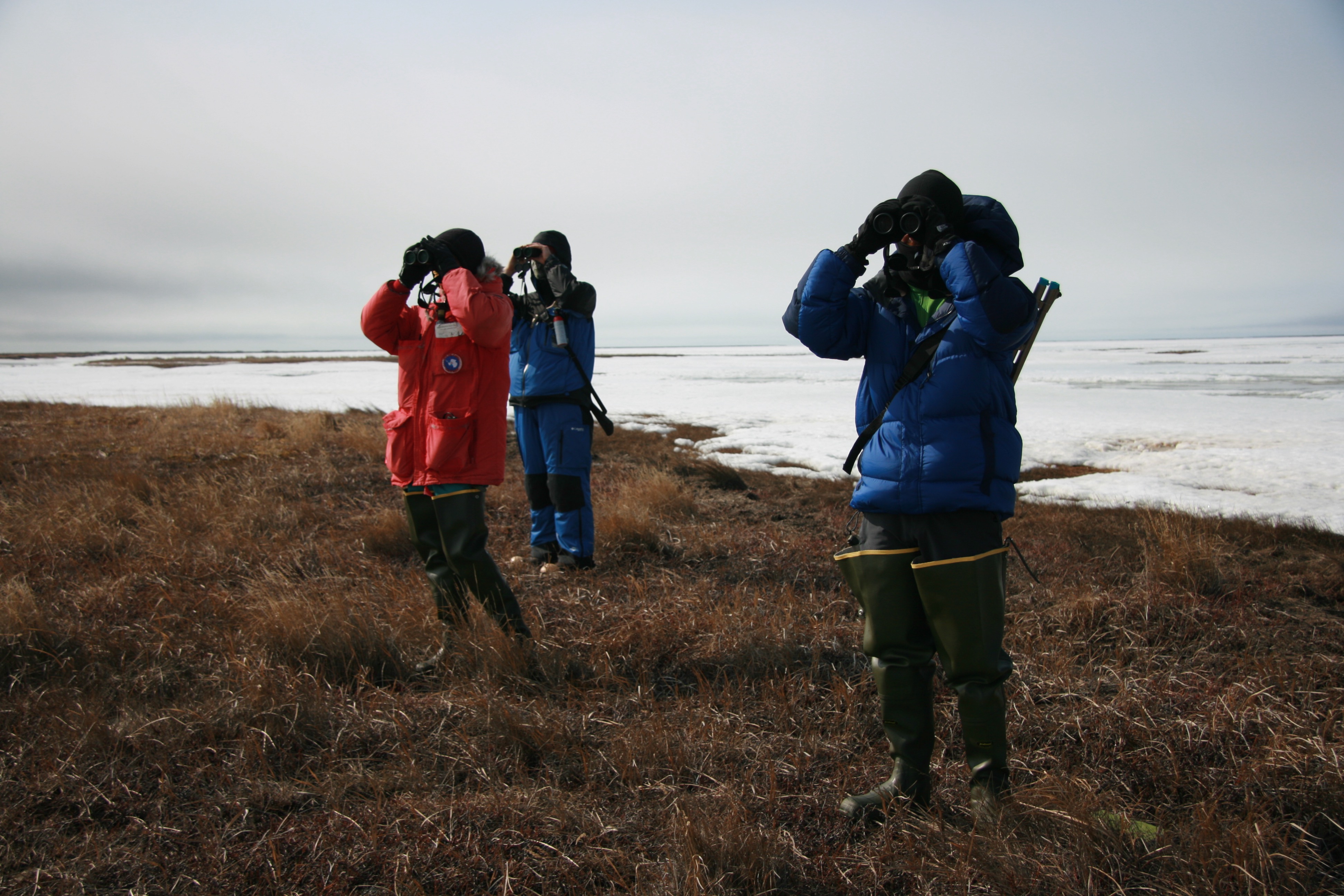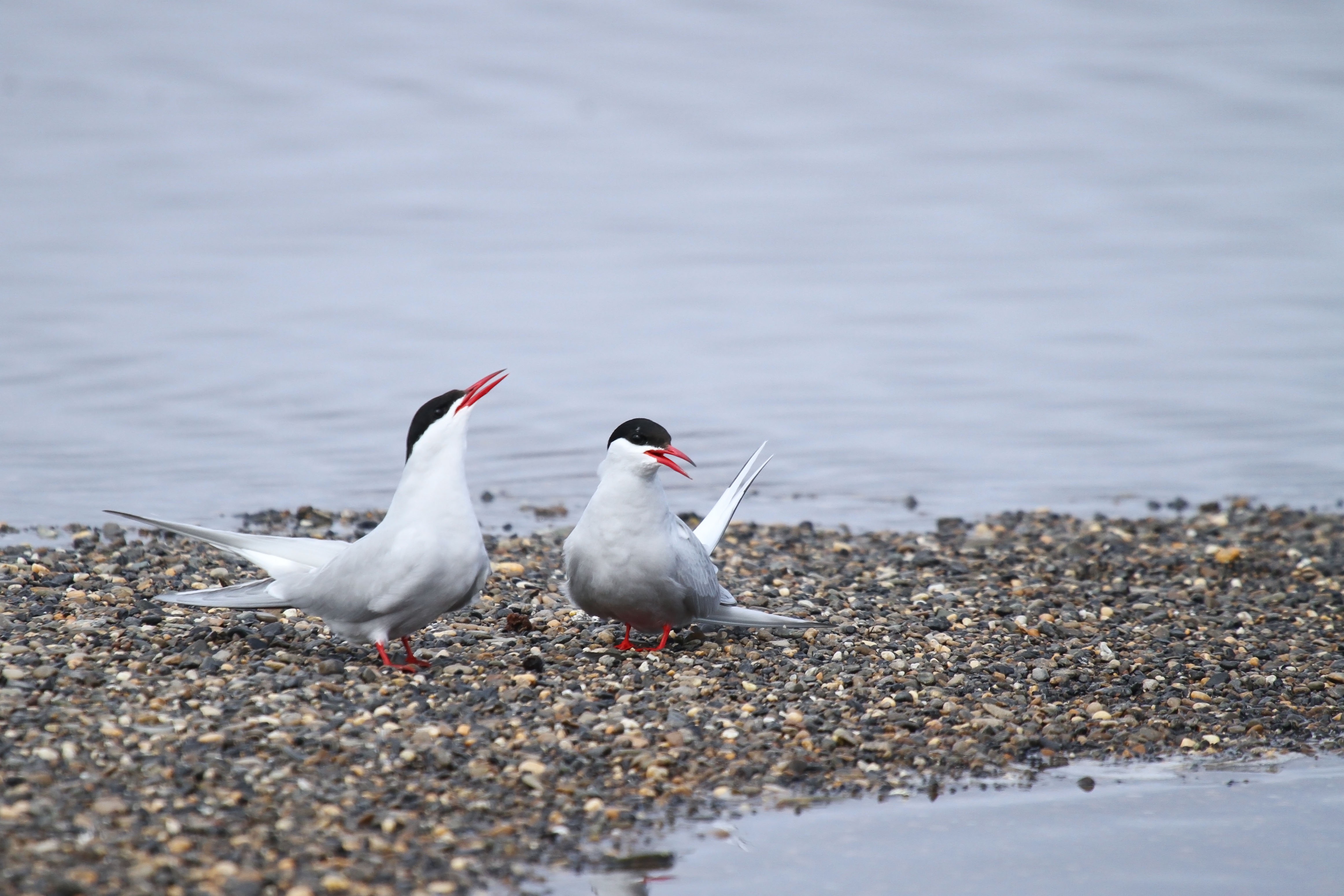The tundra of northwest Alaska is teeming with life in the summer months— plant, insect, and animal. The shorebird crew arrives at the study site near Krusenstern Lagoon in time for many firsts: the first Willow Ptarmigan nest with one egg, the first willow and sedge catkins, the first Pedicularis flowers, the first woolly bear caterpillar… For our Alaskan crew members coming off of a long winter, every first is exciting, even the insects that portend the coming mosquito invasion.

This year's sedge flowers stand out brightly against last year's growth. Photo: Jennifer Kardiak

A woolly lousewort, orPedicularisflower, just beginning to emerge from the tundra. Photo: Megan Boldenow
The first nests we find on the tundra are almost invariably that of the early-arriving Tundra Swans and the resident Willow Ptarmigans, but shorebird nests won’t be far behind. In late May and early June, male birds, shorebird and non-shorebird alike, call day and night. Their calls are part of territorial displays that warn conspecific (i.e. same-species) males that a territory is already taken, and they are also part of displays to attract mates. At this time of year, one might say that all the birds on the tundra are downrighttwitterpated.
One of the objectives of our shorebird research is to estimate the density of shorebird nests on the tundra. During daily bird surveys in the early part of the season, we observe these territorial and courtship displays and record them on maps of our study plots. Our observations will help us determine where nests are likely to be found in future searches.

The temperatures might be cold, but that doesn't stop birds in the Arctic from feeling spring fever. Members of the shorebird crew bundle up to observe birds engaging in territorial and courtship displays. Photo: Megan Boldenow

A Lapland Longspur male sings in spite of the snow, attempting to secure his territory and attract a mate. This passerine has one of the more elaborate songs at our study site. Photo: Jared Hughey (All rights reserved)

A Western Sandpiper male calls to let other males know that this patch of tundra is claimed. Photo: Jared Hughey (All rights reserved)

A Dunlin male takes advantage of the height of a tussock to project his territorial call across the tundra. Photo: Jared Hughey (All rights reserved)

A pair of Arctic Terns engages in courtship display. Photo: Jared Hughey (All rights reserved)
